- Established 1982 -HOME: www.hiltonpond.org
THIS WEEK at HILTON POND Subscribe for free to our award-winning nature newsletter (Back to Preceding Week; on to Next Week) |
DOG DAYS OF AUGUST: The first half of August is a slow time for avifauna at Hilton Pond Center. Most parent birds have finished with reproductive activities and no longer are saddled with the exhaustive task of feeding ever-hungry nestlings and pesky fledglings. In numerous species post-juvenal or adult molts have begun, with some birds losing enough wing and tail feathers to make flight--and predator avoidance--more difficult; hiding out in dense vegetation is a safe way to spend the day, especially since growing new plumage consumes so much energy. We're also not yet seeing a fall influx of Neotropical migrants passing through from up north, so we take most of our early August birding enjoyment from watching and banding Ruby-throated Hummingbirds whose numbers are swelling by the day. (As of 15 August 2020 we were experiencing our second-most-productive hummer season since 1984: That's 126 bandings, plus 47 returns from previous years!) Despite an overall reduction in non-hummingbird activity, however, there's still some really speedy stuff going on in the natural world around Hilton Pond--as the following account reveals.
All text, maps, charts & photos © Hilton Pond Center One dictionary defines the verb "to mushroom" as "increasing or developing very quickly," with synonyms such as "burgeon, flourish, luxuriate, proliferate, shoot up, spread, and sprout." That term certainly applies to a specimen of Amanita jacksonii (AKA Amanita caesarea, above) that appeared in the front yard one morning this week at Hilton Pond Center. At dawn it was a chicken egg-sized red-orange button barely poking above the soil. Noontime it was recognizable as a mushroom with short stalk, and the photo above shows how it looked just before sunset. By next morning the cap had opened all the way to flatness, with the whole mushroom tipped over like a broken umbrella--lying where squirrels, chipmunks, and an Eastern Box Turtle found it delectable. Such is the life of a mushroom, which spends the year underground as a root-like asexual mycelium--only to be stimulated by wet weather or some other factor until it bursts upward from the substrate to form that more-familiar spore-bearing structure we photographed. Relative to many natural processes this above-ground phenomenon happens mushroomingly fast.
All text, maps, charts & photos © Hilton Pond Center And speaking of speed, we were checking one of the Center's mist nets this week for birds when instead we encountered a couple of Dog-Day Cicadas, Neotibicen canicularis, that flew quickly into the net--in tandem. We extricated the pair and placed them on a dead branch for photos, being careful not to cause their premature separation. We ought not have been concerned: The male (facing right, above) had a firm grip on the female with his claspers, tiny tong-like structures that hold his intromittent organ tight against the female's sex opening while he transfers sperm. (Notice the tip of her cone-shaped abdomen is pointed upward in a receptive posture.)
All text, maps, charts & photos © Hilton Pond Center We snapped a few images of this copulatory pose and suddenly the male zipped off--buzzing loudly as male cicadas are prone to do--and very likely in search of another mate. (Actually, female cicadas find the males, attracted by that incessant buzzing.) Left behind after this speed date was a fertilized female that eventually flew off herself,
All text, maps, charts & photos © Hilton Pond Center If you're a tree-hugger like us, you might want to avoid embracing the trunk of this native Honeylocust, Gleditsia triacanthos (above), growing on a slope above Hilton Pond. The tree is an "armored" species, its bark in this case protected by long, sharp daggers capable of inflicting severe pain on the unsuspecting dendrologist who backs into one accidentally. Such a mishap will cause one to hurriedly move in a different direction at a rate much faster than mushrooms sprout or cicadas mate!
All text, maps, charts & photos © Hilton Pond Center We've never tasted the smooth-but-pebbly bark of Honeylocust, but based upon sweetness of its seedpod pulp we wouldn't doubt the tree's sap is likewise sugary. This could help explain the advantage of being armored; herbivores aren't likely to take a bite out of thorn-covered bark. But what herbivores would eat tough Honeylocust bark in the first place, you might ask. Paleontologists think megafauna from the Pleistocene Epoch--Giant Ground Sloths, Woolly Mammoths and Mastodons, and other oversized creatures such as deer, bison,and beavers--might have exerted such selective pressure. Incidentally, those sharp projections on a Honeylocust trunk are true thorns, which are actually modified woody stems. Compare these to roses and blackberries that actually have decurved "prickles"--NOT thorns, despite what poets say! Unlike Honeysuckle thorns, rose prickles arise from epidermal tissue--while cactus spines are modified leaves. The photo above shows new orange Honeylocust thorns from 2020, dark brown ones from last year, and gray ones from sometime before that.
All text, maps, charts & photos © Hilton Pond Center When considering things that happen fast in nature one isn’t likely to think about butterflies, which seem to flit about slowly and ever-so-gracefully on a midsummer breeze. Yeah, well, then you've never tried to take photos of butterflies! Some of these colorful winged creatures are deceptively fast, so much so that the best time to catch them with a camera is on cool morning before they get revved up ready to fly. By midday butterflies are flapping all over, speedily looking for nectar plants or--in the case of a female--almost frantically seeking a suitable host plant on which to deposit her eggs. One such lepidopteran is the Red-spotted Purple (female shown above) , whose caterpillars in these parts seem to dine primarily on foliage of Black Cherries, Prunus serotina.
All text, maps, charts & photos © Hilton Pond Center Red-spotted Purples, Limenitis arthemis--AKA Red-spotted Admirals--are large blue-and-black butterflies that resemble swallowtails sans tails. They are considered Batesian mimics of the toxic Pipevine Swallowtail, Battus philenor; through such mimicry they minimize predation. Showing an uncommon form of sexual dimorphism, the female Red-spotted Purple is more colorful than her mate, with bright orange spots on dorsal edges of her forewings. Both our photos above were possible because the individuals slowed down long enough to find a patch of moist soil where they engaged in "puddling"--sucking up small amounts of dissolved minerals important for basic metabolism and reproduction. Even while drinking the male rapidly opened and shut his wings, making it difficult to get a sharp exposure.
All text, maps, charts & photos © Hilton Pond Center The speediest of all our subjects this week at Hilton Pond Center has to be the Ruby-throated Hummingbird (RTHU, hatch-year male, above), whose wings beat at the eye-blurring rate of about 60 times per second. As usual, our local RTHU population has gradually increased in early August, although the number of adult males with red gorgets decreased dramatically in recent weeks. While a few adult females may still be tending to very late second-brood nestlings by mid-August, adult males are essentially done for the year; in fact, some have already headed south to establish territories on non-breeding grounds in Mexico and Central America. Thus, chances of seeing adult male RTHU at your feeder diminish a little more every day as we march toward September. Adult male ruby-throats have actually been few in number at the Center the past several years. One we caught and banded on 14 August was just the 15th of the year, following on totals of 16 last year and 15 in 2018. Compare that to our high of 60 in 2015 and 46 the year before that and you start to wonder--without answers--what might be going on more recently. (NOTE: Those 15 adult males so far this year comprise just 12% of the 125 RTHU banded in 2020--about average for our 37 years of research at the Center. Most summers, adult females outnumber adult males 4:3; we have 32 in the current season--more than double their male counterparts.) It's likely we won’t catch many more adult male RTHU during the current breeding season. August will be winding down, and since 1984 we've only banded 51 in September--none after the 23rd.
All text, maps, charts & photos © Hilton Pond Center That one male Ruby-throated Hummingbird (above) we did capture on 14 August this year looks like he's been through the wringer. He survived the "Hummingbird Wars"--which included vigorously defending a territory and mating with at least one female--so he's probably more than ready to head south. He looks pretty disheveled, in large part because he has already started molting. Notice the pin feathers around his eye, at the base of his bill, and on his forehead. These white sheaths will break away and unfurl the feathers within--we would hope before he migrates--lest the hard, cylindrical structures cause more aerodynamic drag than overlapping feathers. Ruby-throated Hummingbirds--especially adults--do often start their body molt in North America, but they save wing and tail replacement for the Neotropics. It would be bad news to begin flight feather molt just as you headed out from Hilton Pond on a 2,000-mile migration route--no matter how fast you tried to fly. All text, maps, charts & photos © Hilton Pond Center Image post-processing via DeNoise AI, Sharpen AI, and other Topaz Lab tools
Checks also can be sent to Hilton Pond Center at: All contributions are tax-deductible on your Don't forget to scroll down for Nature Notes & Photos, |
|---|
|
"This Week at Hilton Pond" is written and photographed by Dr. Bill Hilton Jr., executive director of Hilton Pond Center for Piedmont Natural History
|
|
|
Please refer "This Week at Hilton Pond" to others by clicking on this button: |
|

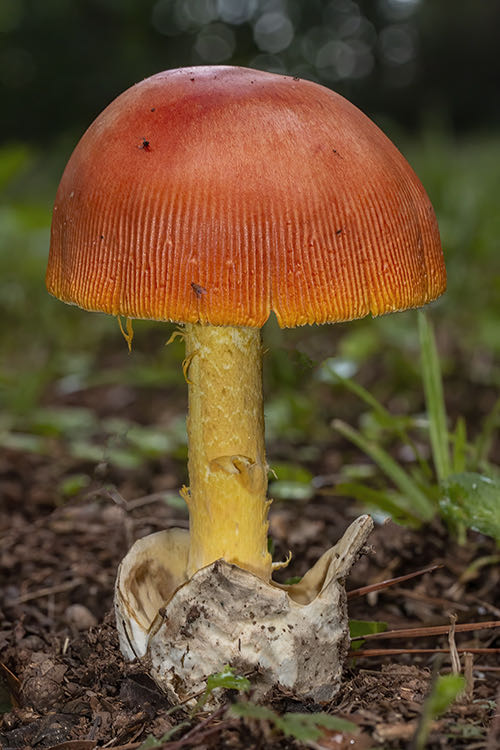
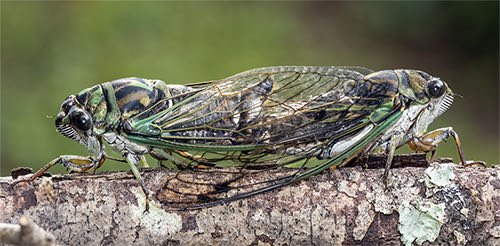
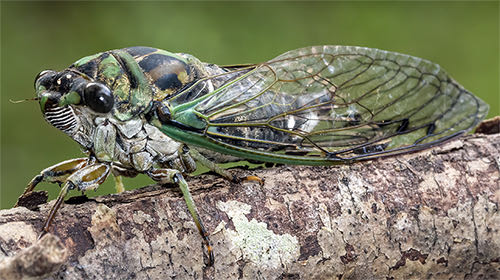
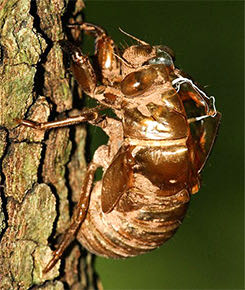 undoubtedly looking for an appropriate twig. There she would cut through bark with her saw-like ovipositor and lay eggs that hatch into nymphs in six or seven weeks. The nymphs drop to the ground, burrow into the soil, and find a tree root they pierce with sucking mouthparts. After two to five years of subterranean life, mature dog-day nymphs exit their burrows and cast off those familiar ghost-like golden exoskeletons (above right) we find in all sorts of odd places. Yes, five years underground seems like a long time, especially after a rapid-fire mating process that took only a few minutes.
undoubtedly looking for an appropriate twig. There she would cut through bark with her saw-like ovipositor and lay eggs that hatch into nymphs in six or seven weeks. The nymphs drop to the ground, burrow into the soil, and find a tree root they pierce with sucking mouthparts. After two to five years of subterranean life, mature dog-day nymphs exit their burrows and cast off those familiar ghost-like golden exoskeletons (above right) we find in all sorts of odd places. Yes, five years underground seems like a long time, especially after a rapid-fire mating process that took only a few minutes. 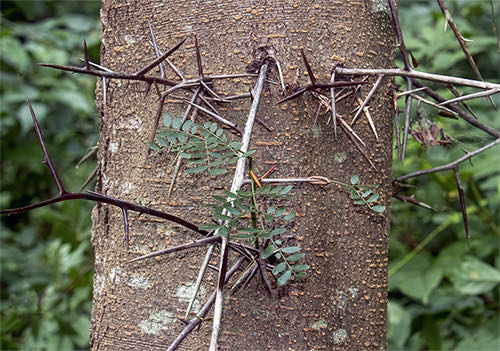
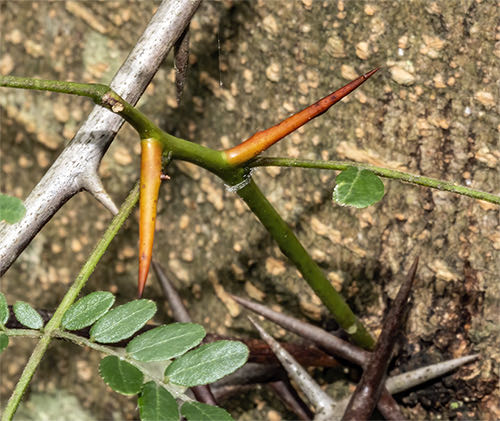
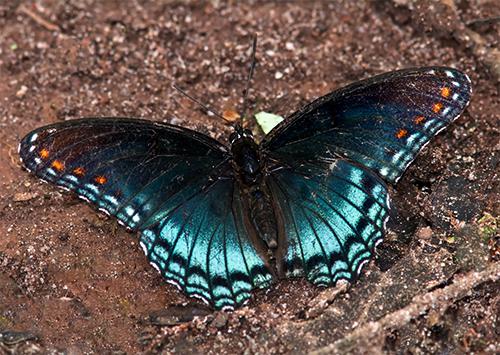
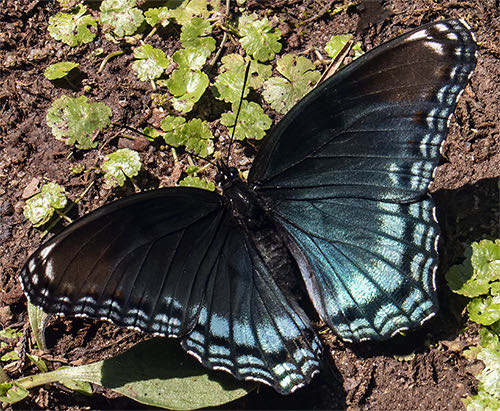
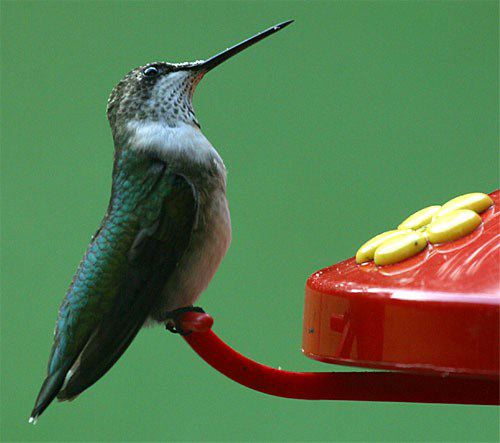
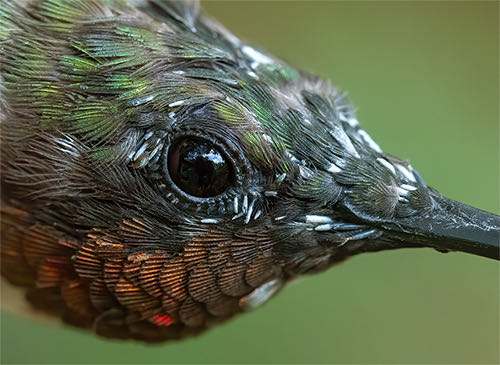










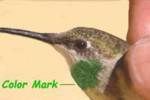 Please report your
Please report your